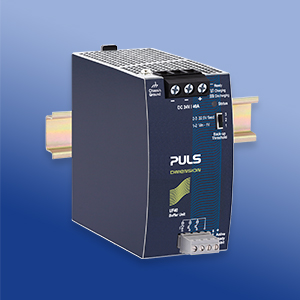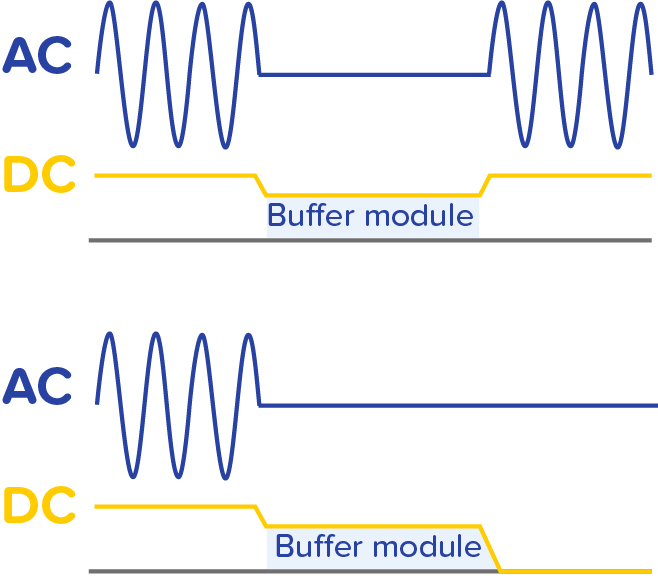

Buffer modules
Buffer modules with electrolytic capacitors work similarly to a DC-UPS and can bridge power failures in the 24 V or 48 V mains for periods measured in milliseconds.
In buffer mode, the output voltage is regulated and the change from normal to buffer mode occurs without interruptions. All modules are protected against overload and short-circuit and have a wide operating temperature range.
Buffer module
What is a buffer module?
An interruption of the power supply in the millisecond range can have serious consequences: Manufacturing processes can be disrupted and data loss and damage to machinery and equipment can occur. For this reason, in addition to UPS modules with a battery, buffer modules with electrolytic capacitors are used to bridge short-term voltage dips or load fluctuations.
The buffer module is a supplementary device for regulated DC 24 V power supplies. It stores energy from the DC circuit in integrated electrolytic capacitors. This energy is then provided to the DC bus through a controlled process in the event of a voltage dip or loss.
With the help of the buffer module, machines and systems can be easily equipped for worldwide use in unstable networks.


What are common applications for the buffer module?
-
Buffer module for bridging power failures without interruption
Statistics show that 80 % of all power failures last less than 0.2 s. These power failures are completely bridged by the buffer module. This increases the reliability of the system as a whole.
- Buffer module for extended power failure bridging time
In the event of a fault or disconnection of the power supply, the buffer module continues to supply the load current for a specified period of time. Process data can be stored and processes shut down before the DC power supply is terminated. This allows for controlled restarts afterwards.
- Buffer module for the short-term supply of an additional peak current
Buffer modules can be used for a short-term supply of an additional peak current that is higher than the rated current of the power supply.


How does a buffer module differ from a UPS module?
A buffer module with electrolytic capacitors is similar in function to a UPS module. The only difference between these two solutions for an uninterruptible power supply, is their range of applications: For buffer times of less than 4 seconds, the buffer module is the ideal alternative to a DC UPS solution. In applications with short-term high peak currents, it provides the required energy and thus avoids the otherwise usual over-dimensioning of the power supply.
Advantages of a buffer module:
- The buffer module is absolutely maintenance-free, since no battery is installed.
- The buffer module is space-saving and cheaper compared to the UPS module.
- No control wiring is required for the buffer module. It can be added in parallel to the load circuit at any point.
- Multiple buffer modules can be connected in parallel to provide additional power or to increase the power failure bridging time.
UPS modules are suitable for bridging longer downtimes. For more information about the modules with battery or with capacitor storage, please refer to the product category .















